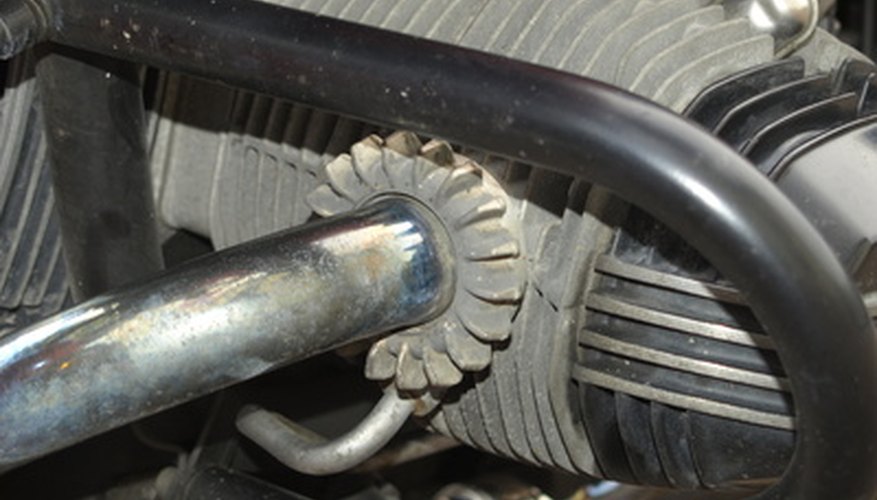Carbon brushes in motors are used to transfer energy from the commutator to a terminal. The earliest brush prototypes were made from copper, according to HyperPhysics at Georgia State University. To properly clean motor brushes, you must disassemble the motor and clean the individual parts. When removing brushes from a motor, mark them so that they can be inserted at the same angle and position that they were in before cleaning.
Unscrew the brush covers using a screwdriver. Some motors may have brush covers that can be removed without a screwdriver.
Lightly push the wire next to the brushes to the side with a toothpick. This will allow the brushes to be removed. Gently pull the wires away from the motor to release the brushes if the wires are attached to the brushes.
- Carbon brushes in motors are used to transfer energy from the commutator to a terminal.
- Gently pull the wires away from the motor to release the brushes if the wires are attached to the brushes.
Mark the top of each brush with a needle to ensure that it is returned to the motor in the proper position. Brushes wear down where they contact commutator and must be repositioned so this worn area continues to face the commutator.
Fill a cup with cleaning solution or alcohol. Submerge the brushes in the solution. Soak the brushes as suggested on the cleaner's label or for five to ten minutes if you are using alcohol.
- Mark the top of each brush with a needle to ensure that it is returned to the motor in the proper position.
- Soak the brushes as suggested on the cleaner's label or for five to ten minutes if you are using alcohol.
Insert the tip of a compressed-air can into the holes where the brushes were positioned in the motor. Blow a burst of air into the holes to remove dirt and dust.
Remove the brushes from the cleaning solution or alcohol and allow them to dry. Place the brushes back into the motor and reattach any wires using the needle marks for guidance.
WARNING
Replace brushes that have been worn down and are no longer functional.
